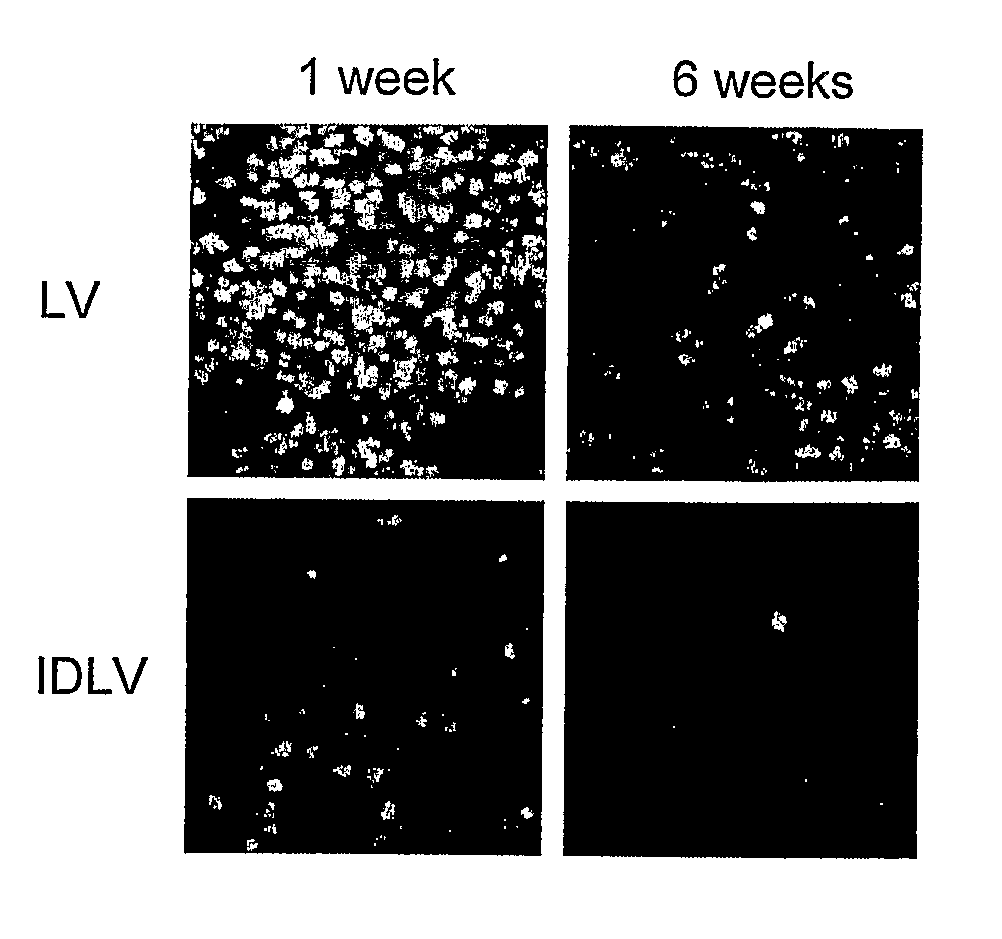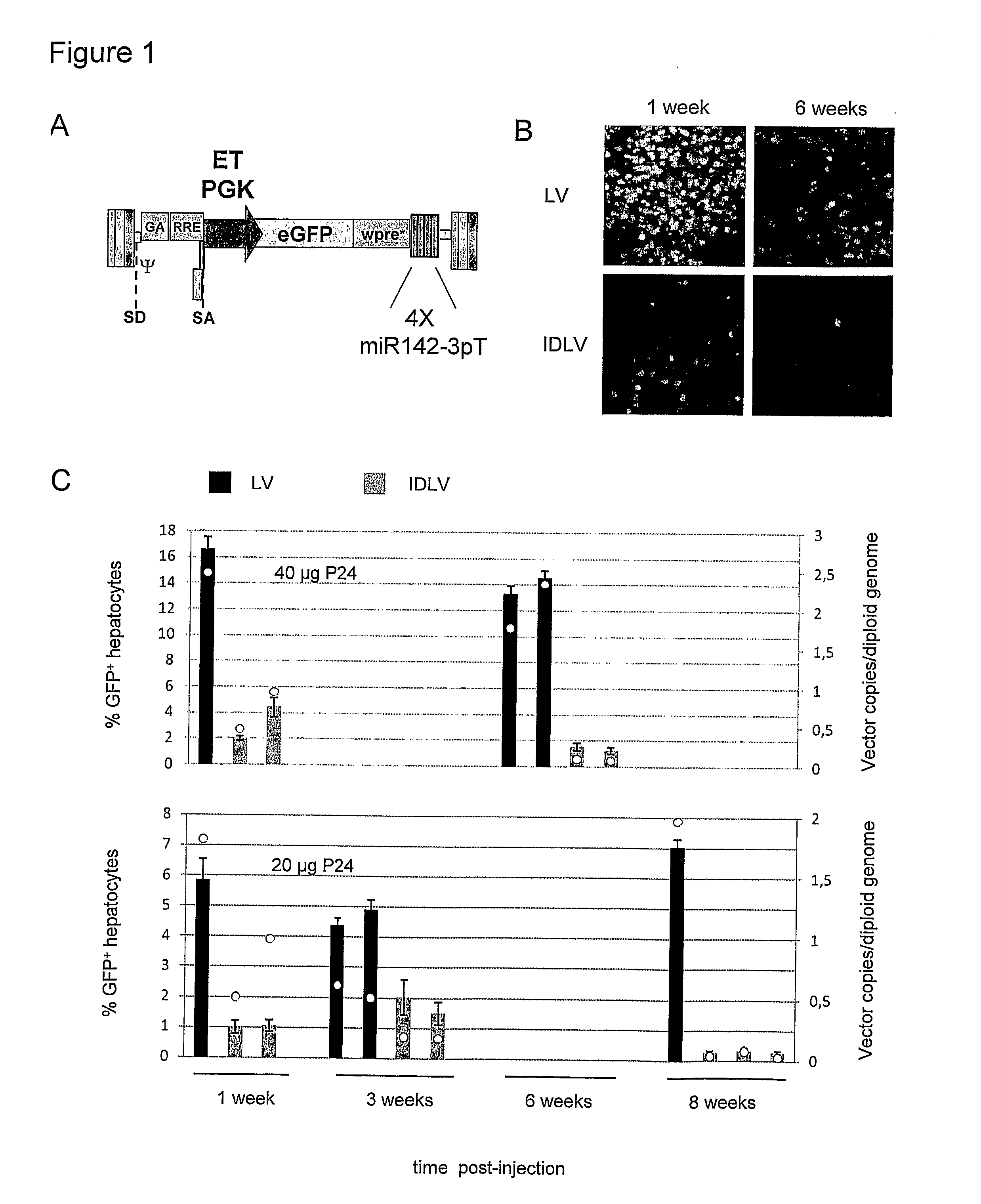Gene vector for inducing transgene-specific immune tolerance
a gene vector and immune tolerance technology, applied in foreign genetic material cells, biochemistry apparatus and processes, sugar derivatives, etc., can solve the problems of limiting the potential application of gene replacement approaches for the correction of diseases, insufficient to fully prevent the development of antigens in challenging settings, and insufficient to prevent the immune response from fully preventing its development, so as to prevent the initiation of an immune response, prevent transgene expression, and prevent high expression
- Summary
- Abstract
- Description
- Claims
- Application Information
AI Technical Summary
Benefits of technology
Problems solved by technology
Method used
Image
Examples
Embodiment Construction
[0192]We have developed a novel strategy to enable stable gene transfer in immunocompent mice which relies on microRNA-mediated post-transcriptional regulation of transgene expression. In this strategy, we incorporate complementary sequences to hematopoietic-specific microRNAs, such as miR-142 (142T), into the 3′ untranslated region of lentiviral vectors (LV), making the transgene-encoding transcript susceptible to miRNA-mediated down-regulation. In this way, transgene expression is specifically prevented in hematopoietic-lineage antigen presenting cells (APC), while being maintained in non-hematopoietic cells (Brown et al., Nat Med 2006). This strategy, which imposes a stringent post-transcriptional control on transgene expression, enabled stable delivery and long-term expression of transgenes encoding GFP, as well as human coagulation Factor IX (FIX), in immunocompetent mice, without evidence of immune response to the transgene product (Brown et al., Blood 2007). We have found tha...
PUM
| Property | Measurement | Unit |
|---|---|---|
| thick | aaaaa | aaaaa |
| length of time | aaaaa | aaaaa |
| nucleic acid sequence | aaaaa | aaaaa |
Abstract
Description
Claims
Application Information
 Login to View More
Login to View More - R&D
- Intellectual Property
- Life Sciences
- Materials
- Tech Scout
- Unparalleled Data Quality
- Higher Quality Content
- 60% Fewer Hallucinations
Browse by: Latest US Patents, China's latest patents, Technical Efficacy Thesaurus, Application Domain, Technology Topic, Popular Technical Reports.
© 2025 PatSnap. All rights reserved.Legal|Privacy policy|Modern Slavery Act Transparency Statement|Sitemap|About US| Contact US: help@patsnap.com



